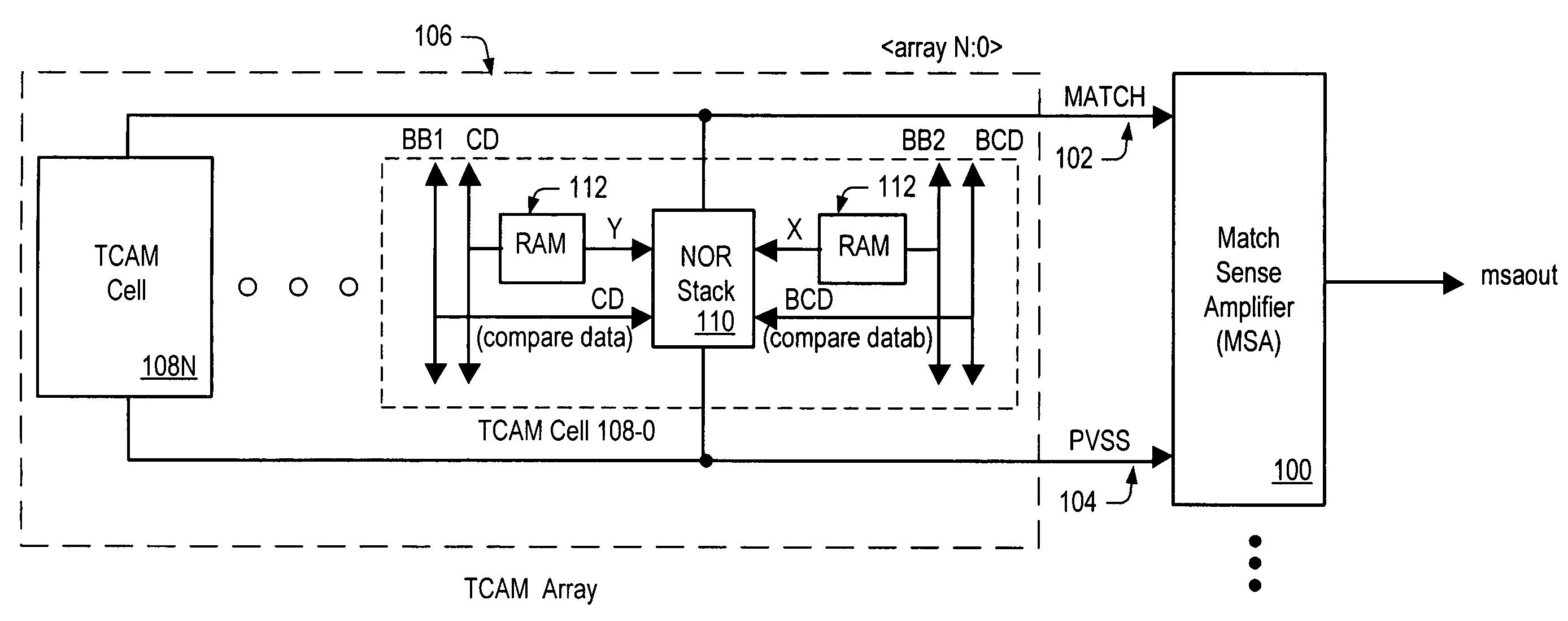Memory device and sense amplifier circuit with faster sensing speed and improved insensitivities to fabrication process variations
- Summary
- Abstract
- Description
- Claims
- Application Information
AI Technical Summary
Benefits of technology
Problems solved by technology
Method used
Image
Examples
Embodiment Construction
[0047]To reduce overall current consumption, a sense amplifier circuit may operate in conjunction with a “pseudo-supply” arrangement. A pseudo-VSS arrangement can include a pseudo-VSS node that is preset (i.e., pre-discharged) to a predetermined value (e.g., VSS). As will be described in more detail below, such an arrangement utilizes a charge sharing mechanism that functions to conserve charge on a match line, thus reducing overall current consumption in the sense amplifier circuit.
[0048]Various examples of a content addressable memory (CAM) including a pseudo-VSS arrangement are shown in U.S. Pat. No. 6,515,884 to Sywyk et al. U.S. Pat. No. 6,515,884 shares a common assignee with the present invention and is incorporated herein in its entirety. However, the examples disclosed in U.S. Pat. No. 6,515,884 should not be construed as limiting to the present invention.
[0049]FIG. 1 shows a memory architecture including a CAM device and a single-ended sense amplifier with a pseudo-VSS arr...
PUM
 Login to View More
Login to View More Abstract
Description
Claims
Application Information
 Login to View More
Login to View More - R&D
- Intellectual Property
- Life Sciences
- Materials
- Tech Scout
- Unparalleled Data Quality
- Higher Quality Content
- 60% Fewer Hallucinations
Browse by: Latest US Patents, China's latest patents, Technical Efficacy Thesaurus, Application Domain, Technology Topic, Popular Technical Reports.
© 2025 PatSnap. All rights reserved.Legal|Privacy policy|Modern Slavery Act Transparency Statement|Sitemap|About US| Contact US: help@patsnap.com



